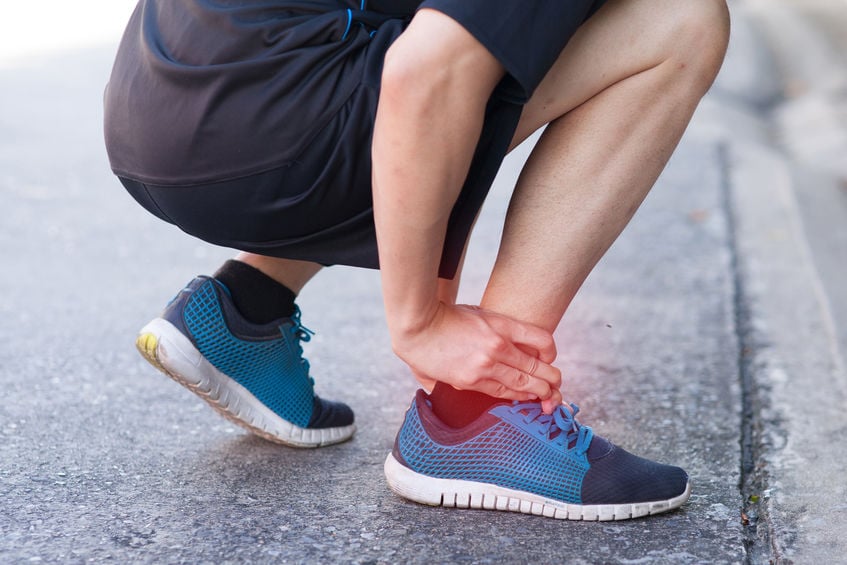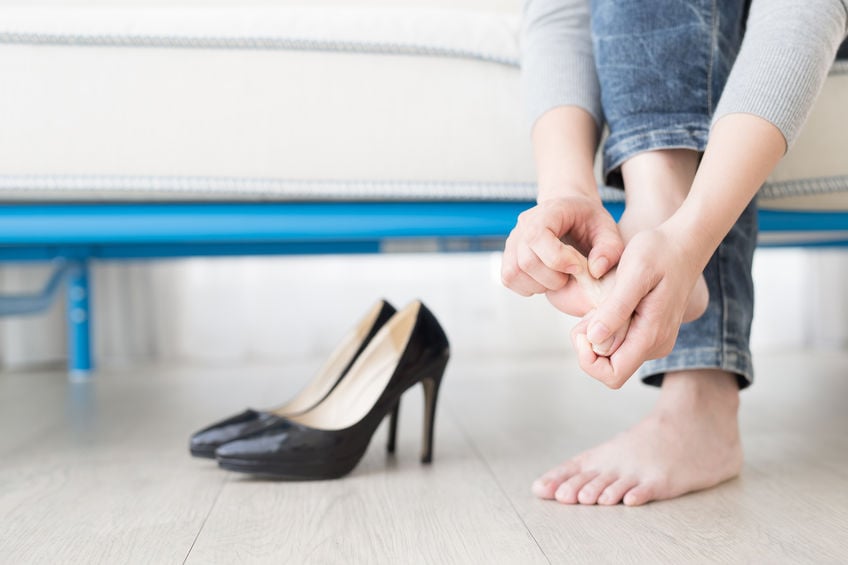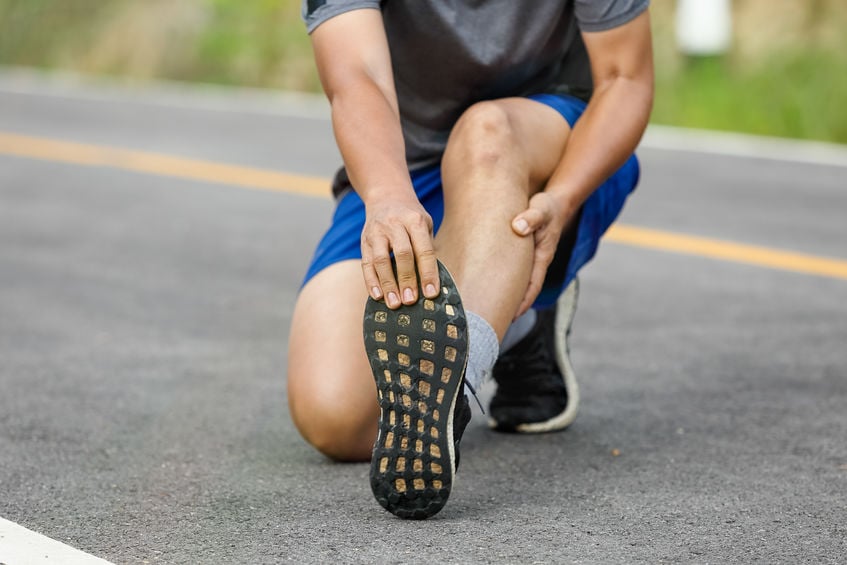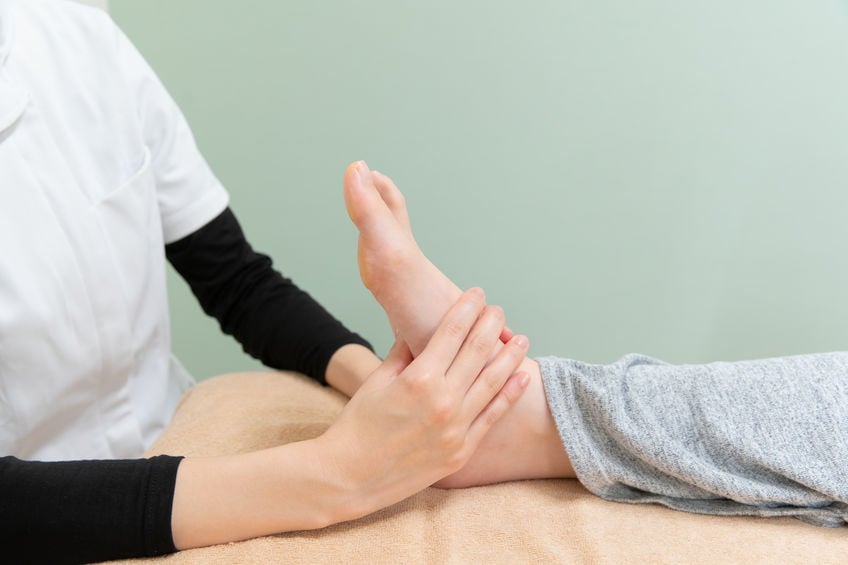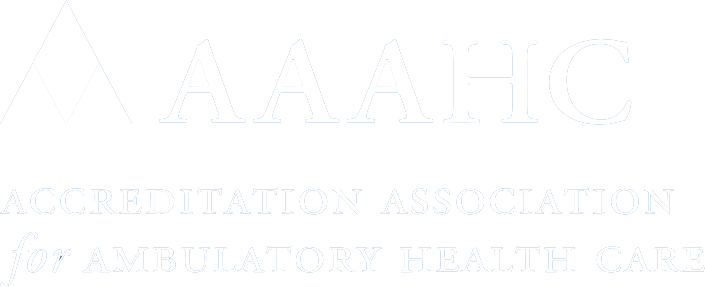What Is A Hammer Toe?
Like the fingers, toes contain 3 bones and joints. A hammer toe occurs when one or more toes develop an abnormal bend at the middle joint. The joint bends upward, and the end of the toe points downward. The condition is typical in the second, third, or fourth toe and can remain fixed in the position if left untreated. Hammer toes typically cause pain, stiffness, blisters, and reduced activity.

What causes hammer toes?
Each toe depends on a tendon to help with smooth extension and flexion. If the tendon becomes stiff or inflamed, a hammer toe can develop. Doctors believe some genetic factors cause the condition. For instance, if the second toe is longer than the big one, the chance of developing hammer toe increases. Past injuries, diabetes, or arthritis can also pose risks. However, most cases are due to poor footwear. Toes are meant to lay flat. People who wear tight shoes, high heels, or shoes with a small toe box can develop a hammer toe over time.
Do you need surgery?
Hammer toes can be painful. People who enjoy running, walking, or dancing feel the pain most often, and aggravating activities may need to be limited. Other patients are more concerned about the cosmetic appearance of this injury. Surgery may be necessary in more severe cases, but many people with hammer toe can benefit from non-invasive treatments. Here are 3 ways to nail this problem down for good.
1. Footwear matters
Wearing the proper footwear is one of the most effective ways to manage the condition. A shoe with a broader, more comfortable toe box ensures the toes lay flat. This might mean removing high heels, which place significant pressure on the toes, from the closet. Make sure the shoe has a low heel, a comfortable arch, and is adjustable. Try different types of shoes to get the best fit. Consistently wearing these better shoes will retrain the toes over time.
2. Stretch those toes
A hammer toe can benefit from daily physical therapy exercises. Use a hand to gently extend and flex the toe several times daily. The stretches help to lengthen the tendons and establish a smooth range of motion. If these exercises are painful, see a doctor.
3. Try orthotic devices
Several devices on the market can reposition the toe and the foot. For instance, toe spacers ensure the toes maintain a natural space and position. Other orthotic devices encircle the toe to help stretch and straighten the digit. Finally, for everyday use, try a gel insole to keep the foot in a natural, comfortable arch.
Hammer down a solution
The feet are in use every day, and injuries can happen. In some situations, a hammer toe can form. Early detection is vital, so proper non-surgical treatment can take place. Exercising the toe and wearing the correct footwear is essential to reversing the condition. These non-surgical options need several weeks or months to show improvement. Surgery may be necessary if the toe cannot extend after consistently trying less invasive options.
Can Lower Back Pain Return After Spinal Surgery? 3 Lifestyle Changes To Get The Most Out Of Fusion
Minnesota Valley Valley Center2024-04-02T14:49:38-05:00April 15th, 2024|
Spinal surgery is an excellent solution for lower back pain, but symptoms can return. With lifestyle changes, patients can get the most out of fusion.
A New Lease On Life: Exploring How Robotic Total Joint Replacement Can Get You Active Again
Minnesota Valley Valley Center2024-03-24T17:38:47-05:00March 29th, 2024|
Robotic total joint replacement uses a robotic arm to replace the joint. This innovative approach allows a quick return to activities.
Restoring Dexterity: How Outpatient Carpal Tunnel Surgery Can Change Your Life
Minnesota Valley Valley Center2024-03-24T17:38:37-05:00March 15th, 2024|
After months of wrist and hand pain, carpal tunnel surgery may be needed. With outpatient options, restored dexterity with less pain and discomfort is possible.
More Articles from MVSC
December 14, 2023
Ankle pain is common, but sometimes arthritis is at play. An orthopedic surgeon may recommend subtalar fusion for patients.
November 28, 2023
Is bunionectomy a solution for foot pain caused by bunions? Learn about surgical and non-surgical options before a decision.
September 26, 2023
An Achilles tendon recovery timeline can be long and grueling. With rest and physical therapy, patients can see faster results.
September 19, 2023
Big toe arthritis can cause severe discomfort if left untreated. Hallux rigidus repair can provide extensive relief for patients.




